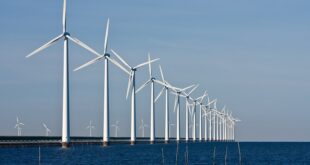China increasingly turned to coal imports during the first quarter to help power its economic recovery from the COVID-19 lockdowns, while its appetite for costly LNG sourced from the global market declined.
Following a number of measures to bolster domestic coal production, global receipts and coal-fired power generation going forward, China’s focus on self-sufficiency has also dampened the anticipation of a resurgence in LNG demand that could have sent global gas prices rocketing akin to 2022.
China’s coal production rose 5.5% on the year to 1.15 billion mt in the first three months of 2023 while imports jumped 63.1% on the year to 101.8 million mt in the same period, according to official government data.
Meanwhile, amid robust domestic production and pipeline imports from Russia via the Power of Siberia pipeline, Q1 LNG imports dropped 4.9% year on year to 16.434 million mt, equivalent to 22.7 Bcm of natural gas, data from China’s General Administration of Customs showed.
The rise in Q1 coal imports partially reflected a low-base effect after Indonesia had imposed an export ban in January 2022, but higher coal usage also reiterates China’s focus on energy security as it prepares to use more of the most readily available fuel to support an anticipated economic recovery.
China announced in March that it will not levy any import tariffs on coal until the end of 2023 to ensure smoother entry of coal into the country. China had removed import tariffs from May 1, 2022, and the tax holiday was scheduled to last until March 31, 2023. S&P Global Commodity Insights has raised China’s thermal coal imports growth for 2023 to 12% from flat to reflect the low-base effect last year.
China has also resumed trading coal with Australia since mid-January, ending an unofficial ban imposed in 2020, while it also signed in March a joint statement to build closer energy cooperation ties with Russia. Since coal supplies from Indonesia and Australia were already exempted from import tariffs from earlier treaties, the latest extension of the tax holiday would likely benefit coal-exporting countries such as Russia, Mongolia, Canada and the US.
The National Development and Reform Commission has increased the medium- to long-term thermal coal contract signing volume guidance to 2.9 billion mt in 2023 from 2.6 billion mt in 2022, an S&P Global Ratings report said.
Rising power
On the demand side, lower-than-usual rainfall in China could impact hydropower generation, leading to additional demand for seaborne coal cargoes.
A Singapore-based trader who mostly deals in the China market told S&P Global that “hydropower is mostly drying so coal is expected to play a major role in China,” adding a cautionary note that “[coal] inventory levels are comfortable in China, and the market will have more clarity [on demand estimates] after the Labor Day break in the first week of May.”
As a possible indicator of the government’s future policy direction, China approved 106 GW of new coal-fired power projects in 2022 — quadruple the number of new permits approved in the previous year — and the equivalent of two large coal power plants each week.
With new coal permits reaching the highest level since 2015, coal-fired power capacity starting construction in China was six times as large as rest of the world combined, S&P Global reported Feb. 27.
Plant retirements have also slowed down, with 4.1 GW of coal-fired capacity shut in 2022, compared with 5.2 GW in 2021.
Such policy measures are likely to have a profound effect on the global gas market as well. Gas prices have historically been susceptible to spikes in air conditioning demand during summer heat waves in Asia that have coincided with winter restocking efforts in Europe.
European wholesale gas prices hit previously unseen extremes during summer 2022 as sharp cutbacks in Russian exports to the region amid geopolitical tensions forced the continent into the competitive global LNG marketplace, where China is a major participant.
Since September 2021, there have been several unprecedented price spikes as Europe became embroiled in a bidding war with buyers around the world to secure gas volumes.
China’s consolidation of coal-fired power use could already be underway, according to the import data.
During April 2022-March 2023, the most recent gas-storage year in Europe, data from S&P Global showed that China imported close to 300 million mt coal, up nearly a fifth compared to the previous period. Meantime, LNG imports dropped a fifth to 61.3 million mt in the same time frame amid historically high prices.
Global gas prices have fallen considerably after the peak in August 2022, but their future direction is still unclear. Many market sources have identified Chinese LNG demand as a key upside-risk factor in the coming 12 months.
With China’s future direction on energy security becoming a lot clearer with its focus on coal, European LNG buyers could have less cause for concern.

 Iran Energy News Oil, Gas, Petrochemical and Energy Field Specialized Channel
Iran Energy News Oil, Gas, Petrochemical and Energy Field Specialized Channel



